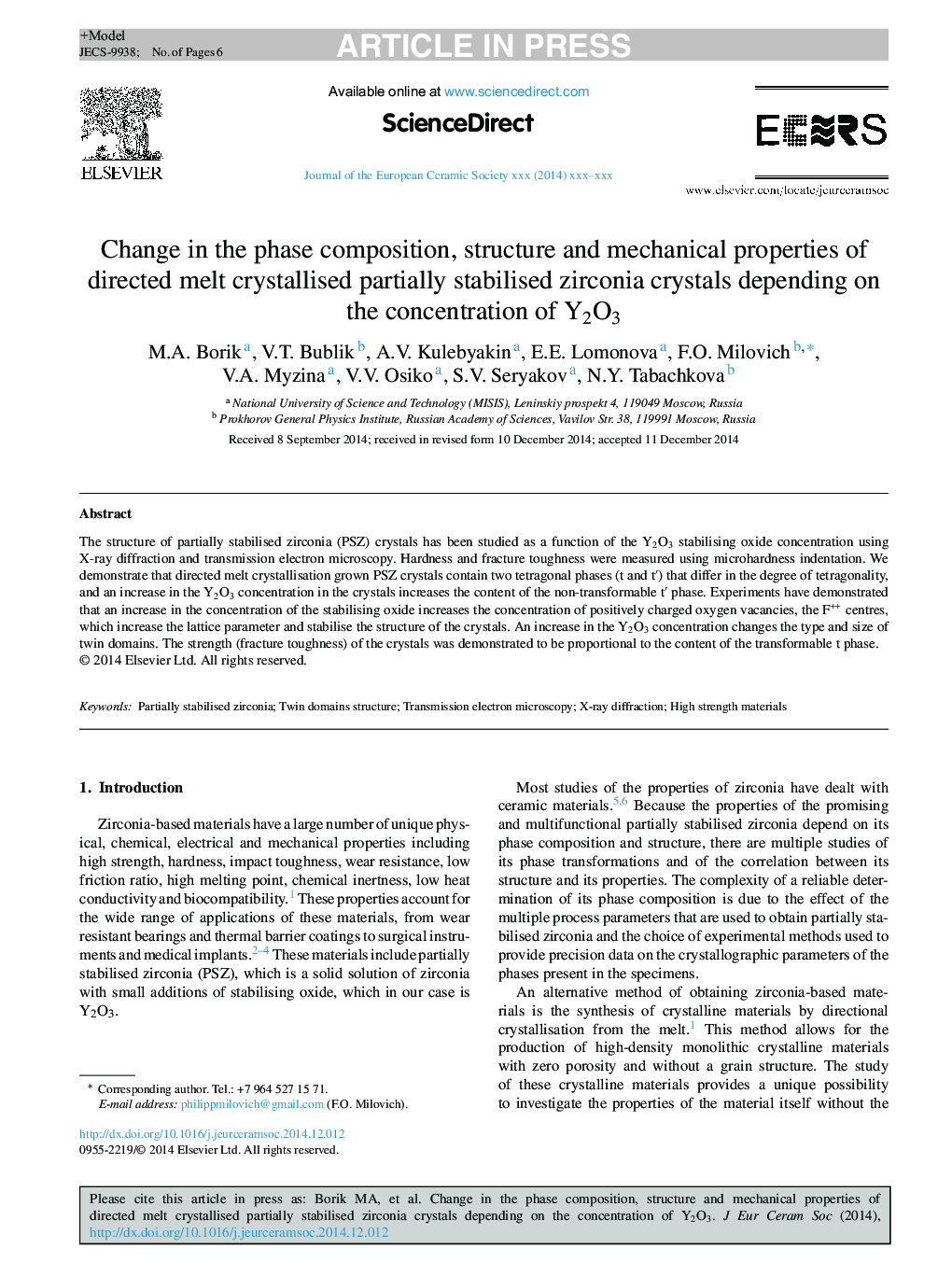| Article ID | Journal | Published Year | Pages | File Type |
|---|---|---|---|---|
| 10629599 | Journal of the European Ceramic Society | 2015 | 6 Pages |
Abstract
The structure of partially stabilised zirconia (PSZ) crystals has been studied as a function of the Y2O3 stabilising oxide concentration using X-ray diffraction and transmission electron microscopy. Hardness and fracture toughness were measured using microhardness indentation. We demonstrate that directed melt crystallisation grown PSZ crystals contain two tetragonal phases (t and tâ²) that differ in the degree of tetragonality, and an increase in the Y2O3 concentration in the crystals increases the content of the non-transformable tâ² phase. Experiments have demonstrated that an increase in the concentration of the stabilising oxide increases the concentration of positively charged oxygen vacancies, the F++ centres, which increase the lattice parameter and stabilise the structure of the crystals. An increase in the Y2O3 concentration changes the type and size of twin domains. The strength (fracture toughness) of the crystals was demonstrated to be proportional to the content of the transformable t phase.
Related Topics
Physical Sciences and Engineering
Materials Science
Ceramics and Composites
Authors
M.A. Borik, V.T. Bublik, A.V. Kulebyakin, E.E. Lomonova, F.O. Milovich, V.A. Myzina, V.V. Osiko, S.V. Seryakov, N.Y. Tabachkova,
